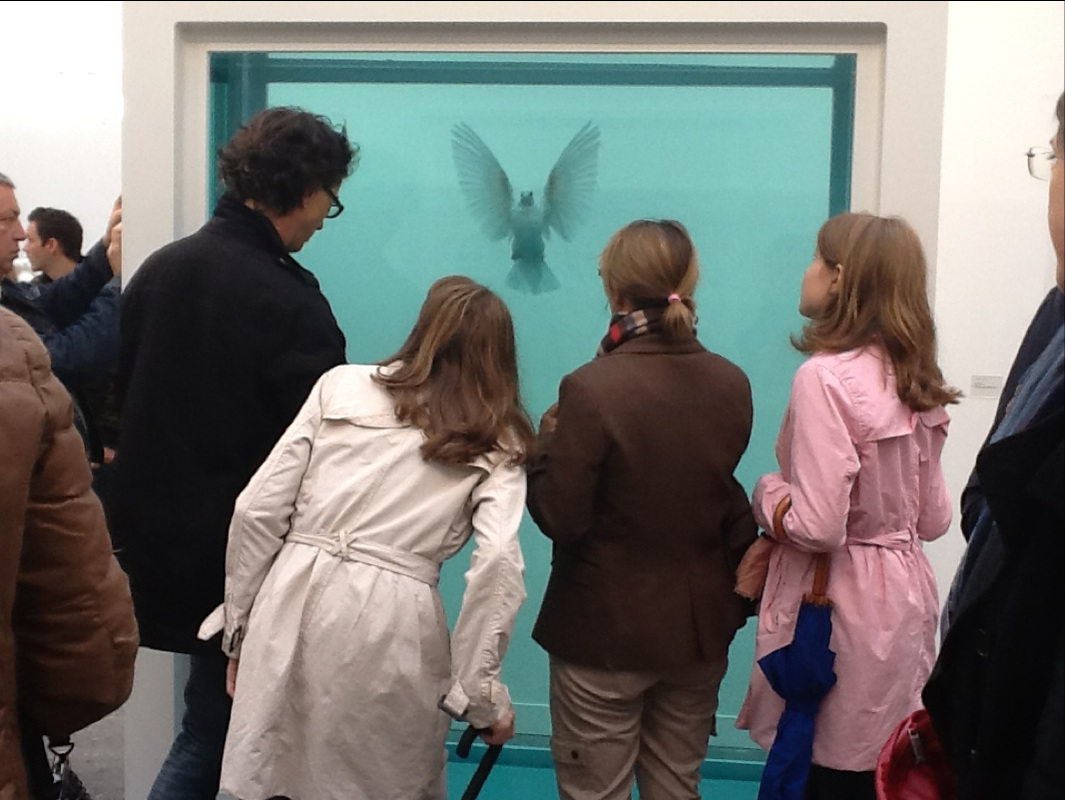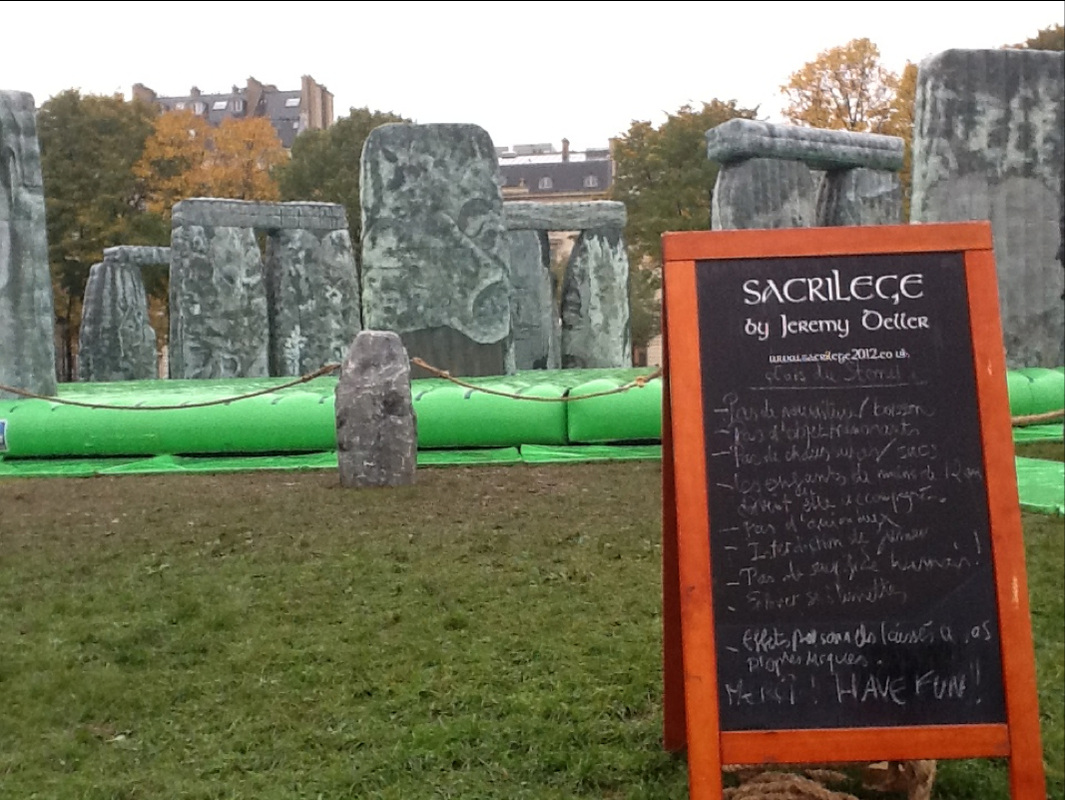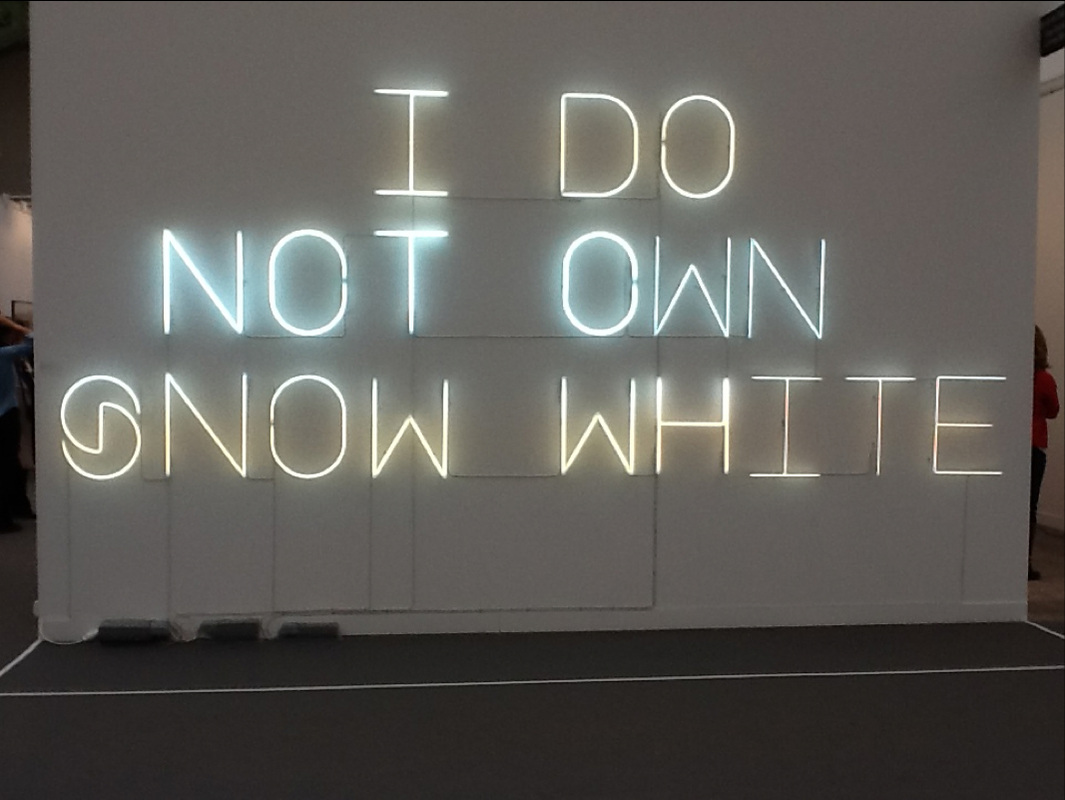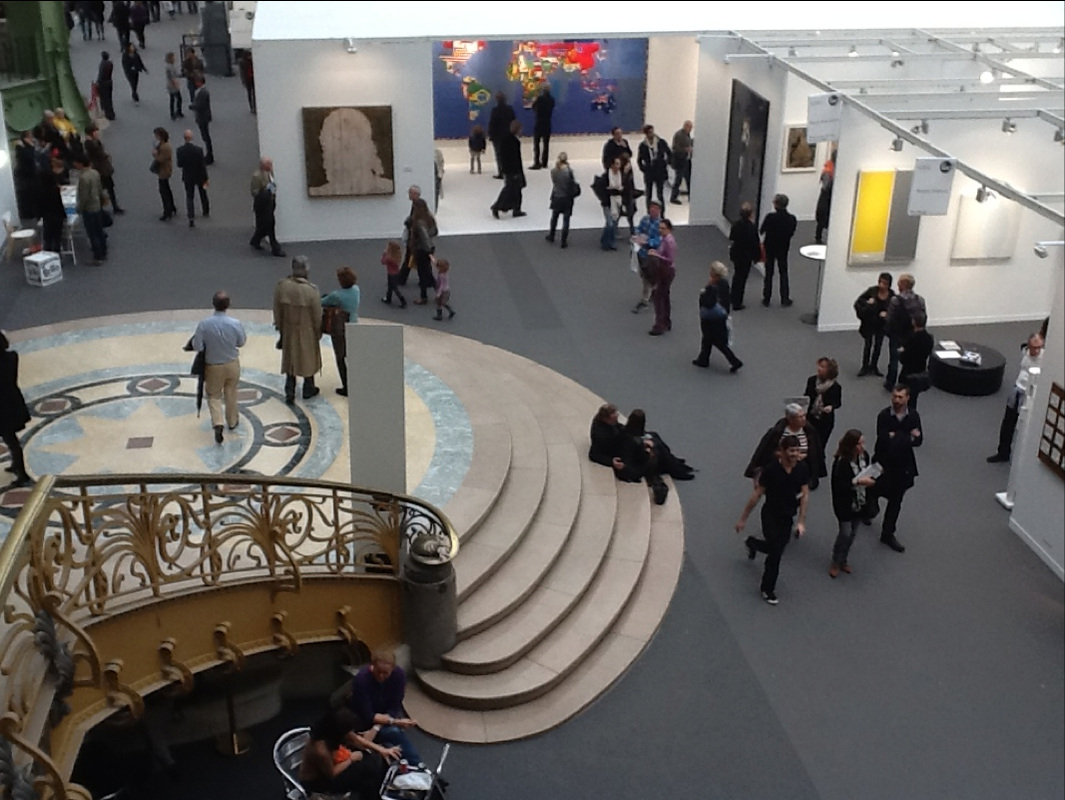To summarize my third week in Paris is to consider various tempos of engagement for a very wide range of cultural activities. From an Asian museum to the top of a pine forest hill near a former royal residence, to slow days in a park and two very different but very edgy art fairs: one held in a palace and the other in a garage.
Save for Sunday the whole week was rainy, if not threatening with overcast clouds. I went to Museé Cernuschi to see its collection of asian artifacts and discovered most of it, if not all, are from various periods of Chinese history, from the Neolithic to the early Qing (close to the modern period). The museum trip quickly became an exercise of reviewing my archaeology and Chinese art classes from UP. Among those that caught my attention were the stoneware and terracotta models of houses and miniature depictions of everyday life. One piece even portrayed a lady feeding pigs in what seemed to be a pigpen in a submerged pit. Some showed houses with small details like roofing and door hinges. These belonged to a set of grave furniture - tokens left at graves - as ersatz or offerings to dead ancestors. In a further gallery two human-faced animals were also identified as tomb guardians, which are placed to guard the dead...from haunting the living. Cannot help but compare this practice to the offering ceremonies (burning replicas of houses, cars, money etc) to propitiate the ancestors that I have just seen in Singapore last September at the conclusion of the so-called ghost month. I was later told by Marguerite that in the middle ages the French also placed tomb guardians in the form of chimeres or dragons first, to ward off evil that might carry off the body (or essence) of the dead and second, to prevent the dead from leaving their tombs. This rumination on death-with halloween quite close by- makes me want to do a "week of death" with visits to all cemeteries and the catacombs. (Including St. Denis) In the afternoon I went to document the Madeleine and St. Augustin cathedrals, all within sight of each other at the Bd. Malesherbes. Despite its relative modernity, I was impressed at St. Augustin and indeed found the architect Baltard's use of cast iron as support and as decoration ingenious: a marriage of form and function. Madeleine proved to be ironic as well, figuratively speaking. Without a dome or a cross and plainly looking like a Greek temple, the church is deceptive and looks more like a civic building. Such a massive stone building would also give you an impression of a dark interior. But inside, thanks to renovations, glass oculi in the roof makes light stream down on the whole of the nave.
It was a different scenario the following day. Marguerite invited me to try the SNCF train system that leads out of Paris. This was an essential skill that I had to learn because some of my sites of interest like Rodin Museum, Chartes, Autun, Reims were all located outside the city and in other French towns and cities. Our eventual target was Fontainebleau, its Chateau and its forest. Indeed the train system here is something worth emulating. Fast, easy and accessible trains can bring you to and from any city without worrying of staying overnight - which is convenient to me and my work pace. Fontainebleau has more Renaissance style buildings than Medieval or 18th century ones. And the crisper air, quieter atmosphere and more laidback life was something of a breather from the cramped, often harassed spirit of Paris. What was remarkable is the discovery that lands in France are extremely well mapped and that even a forest like Fontainebleau actually has a map or plan, with indications of hiking trails and even interesting trees. The trails through the forest and to the pine hills are well marked and although there are no people around for miles, one can easily maneuver through the wilderness.
The following day I felt a bit tired and sore due to the physical exertions of hiking in Fontainebleau. So I took a more slower pace and spent most of the day sketching in Bois de Vincennes, where a lake filled with swans, ducks, peacocks and plovers made an agreeable setting for solitary thoughtfulness. At the ile de Bercy, in the middle of the lake I sensed that I was stretching myself a bit too thin over a few days and decided to work on one project at a time so I do not end up burned out and sick. The following day was a studio day for me and took some time to buy some art supplies at BHV at Hotel de Ville and some electronic supplies at Forum des Halles.
For the weekend, feeling recharged, I aimed to seeing two artfairs, FIAC at the Grand Palais and Slick at La Garage at rue de Turenne. Both aimed at presenting what galleries in Europe and elsewhere had to offer in terms of contemporary and even some modern art pieces.
FIAC got the better of me, I confess, myself being a critic of the overzealousness of contemporary art practitioners at home. There was nothing of the grave, often academic and institutionalized feel of museum displays at FIAC, even though the setting was Grand Palais. I waited in line to gain admittance and braved rain and some slickers looking to cut into the line, for 45 minutes before the door finally opened at noon. Before the queue I had to see the outdoor installations of the art fair and the work Sacrilege by Jeremy Wall at the Esplanade des Invalides won me over for its quirkiness and innovative thinking. An inflatable model of the Stonehenge lies in the middle of the grass and allows children to play within is the whole concept of the piece but its statement of being able to bring such a landmark like Stonehenge is remarkably insightful. This, I guess, is the spirit of the contemporary: ideas are quick to grasp, it is full of wit and is accessible to the public without some textbook or preacher of art history to guide you.
I have been to art fairs and my work has been frequently part of such for the past two years. But FIAC has a characteristic that despite being a market for works, it is also a marketplace for creative ideas. In ArtHK 12 last May I deplored the fact that money or the concept of money, buying and selling, was flaunted to ones face. In ArtStage in Singapore last January, there was some seething intrigue between galleries and the organizers that made the whole experience a trifle disagreeable. There was an electric tenseness that I could not shake off, besides the whole fair being somewhat of an homage to Ai Wei Wei, the dissident Chinese artist censored and jailed by Beijing authorities for his critical work. Well, Ai also made it to FIAC and even sold well, as I gather. But the pieces here of the artist, along with other works seem to be presented as propositions of thought, and not some form of agitation, propaganda or grandstanding of superstars. Even works big named artists like Damien Hirst, or Betrand Laver, Giovanni Penone are shown in an understated but meaningful manner. Indeed FIAC made the Southeast Asian market too full of power issues that undermines the creative work that it supposedly should primarily present. Well, should art then be power objects as well? It may seem so.
There was not a single work of wood statuary in the art fair, and yet, I have recognized many points of affinity within a space than in all my museum visits for the past few days. My insight: contemporary art speaks with a casual vernacular of visual language. In objects and in installations the idea conveyed seem to be one that is quite rooted in the places where the artist lives and shares with his constituents. A lightbulb made of concrete that is placed in a piece of pavement - that alone evokes an urban lifeworld, of incidents that one can or may have experienced while walking in illuminated streets. The lightbulb does not refer to the past, or some utopia in the future: it is remarkably current, of the present, hence the word contemporary. But in Manila such an object is anxiously supported by vague literature, somewhat stylized in the manner of postmodern or post-structural criticism. Like a holy relic, it is steeped in the liturgy of the conceptual, and presented in antiseptic, white wall spaces with snobbish clergy at the doorways refusing admittance when one dares ask why and what the art is for. And if one gains an explanation, it is almost always a long litany and footnoting with current trends in the international art world. I may have experienced an equivalent of a certain Filipino who upon going to Rome and discovering that images of hell are just fictions of artists and writers, wondered how such fictions become infallible truths back home. Indeed the currency of ideas from one place to another carries not immanent meanings, but an open transcendency that is malleable and permeable to issues of those who consume them. Like the idea that Paris is filled with models and fashionable people walking the streets like they do in ramps is totally a marketing ploy. I have never seen such fashion shows in the streets, not even in Le Marais, nor anywhere else. The clothes people wear depend on their needs or means - like in any city, anywhere.
Like FIAC, but on a more modest scale and more intimate space, Slick Paris opened up a number of possibilities on how to present works in the contemporary sense (read: easy). A punching bag in the form of a Louis Vitton bag greeted me and I knew at that very instant what the piece means and how it pokes fun at power objects. So simple, so clear. Cushions and footrests made in a soft fabric that imitates the feel of marble defy the expectations of the mind between textures and mass. A series of funny photographs showed ordinary workers in factories having fun in the workplace: an old man with pipes for skis, fashionistas out of mops and rags, a trolley ride mimicking Santas sleigh. A peephole embedded on a mirror makes you see yourself as a voyeur. Paper moths assembling into a giant ball, a piece of discarded cardboard is repainted as an apartment wall, children made of pigeon feathers, and a dead yeti lying like a rug on a plinth.
The word is: nonchalance. In deeming the ordinary in extraordinary but understated ways contemporary art has the power for reenchantment of the environment, the everyday, with some sort of magic, a jibe, a joke. There is no need for offensive words scrawled, nor angry iconoclasms, nor preachy politics - just the ordinariness of living and the mis-en-scene of everyday existence. Nowness is immediacy, in work and in effect.
Now that is something Paris has got me to reconsider my criticality. Who knew contemporary art was so much fun? I didn't...but now I do.
Save for Sunday the whole week was rainy, if not threatening with overcast clouds. I went to Museé Cernuschi to see its collection of asian artifacts and discovered most of it, if not all, are from various periods of Chinese history, from the Neolithic to the early Qing (close to the modern period). The museum trip quickly became an exercise of reviewing my archaeology and Chinese art classes from UP. Among those that caught my attention were the stoneware and terracotta models of houses and miniature depictions of everyday life. One piece even portrayed a lady feeding pigs in what seemed to be a pigpen in a submerged pit. Some showed houses with small details like roofing and door hinges. These belonged to a set of grave furniture - tokens left at graves - as ersatz or offerings to dead ancestors. In a further gallery two human-faced animals were also identified as tomb guardians, which are placed to guard the dead...from haunting the living. Cannot help but compare this practice to the offering ceremonies (burning replicas of houses, cars, money etc) to propitiate the ancestors that I have just seen in Singapore last September at the conclusion of the so-called ghost month. I was later told by Marguerite that in the middle ages the French also placed tomb guardians in the form of chimeres or dragons first, to ward off evil that might carry off the body (or essence) of the dead and second, to prevent the dead from leaving their tombs. This rumination on death-with halloween quite close by- makes me want to do a "week of death" with visits to all cemeteries and the catacombs. (Including St. Denis) In the afternoon I went to document the Madeleine and St. Augustin cathedrals, all within sight of each other at the Bd. Malesherbes. Despite its relative modernity, I was impressed at St. Augustin and indeed found the architect Baltard's use of cast iron as support and as decoration ingenious: a marriage of form and function. Madeleine proved to be ironic as well, figuratively speaking. Without a dome or a cross and plainly looking like a Greek temple, the church is deceptive and looks more like a civic building. Such a massive stone building would also give you an impression of a dark interior. But inside, thanks to renovations, glass oculi in the roof makes light stream down on the whole of the nave.
It was a different scenario the following day. Marguerite invited me to try the SNCF train system that leads out of Paris. This was an essential skill that I had to learn because some of my sites of interest like Rodin Museum, Chartes, Autun, Reims were all located outside the city and in other French towns and cities. Our eventual target was Fontainebleau, its Chateau and its forest. Indeed the train system here is something worth emulating. Fast, easy and accessible trains can bring you to and from any city without worrying of staying overnight - which is convenient to me and my work pace. Fontainebleau has more Renaissance style buildings than Medieval or 18th century ones. And the crisper air, quieter atmosphere and more laidback life was something of a breather from the cramped, often harassed spirit of Paris. What was remarkable is the discovery that lands in France are extremely well mapped and that even a forest like Fontainebleau actually has a map or plan, with indications of hiking trails and even interesting trees. The trails through the forest and to the pine hills are well marked and although there are no people around for miles, one can easily maneuver through the wilderness.
The following day I felt a bit tired and sore due to the physical exertions of hiking in Fontainebleau. So I took a more slower pace and spent most of the day sketching in Bois de Vincennes, where a lake filled with swans, ducks, peacocks and plovers made an agreeable setting for solitary thoughtfulness. At the ile de Bercy, in the middle of the lake I sensed that I was stretching myself a bit too thin over a few days and decided to work on one project at a time so I do not end up burned out and sick. The following day was a studio day for me and took some time to buy some art supplies at BHV at Hotel de Ville and some electronic supplies at Forum des Halles.
For the weekend, feeling recharged, I aimed to seeing two artfairs, FIAC at the Grand Palais and Slick at La Garage at rue de Turenne. Both aimed at presenting what galleries in Europe and elsewhere had to offer in terms of contemporary and even some modern art pieces.
FIAC got the better of me, I confess, myself being a critic of the overzealousness of contemporary art practitioners at home. There was nothing of the grave, often academic and institutionalized feel of museum displays at FIAC, even though the setting was Grand Palais. I waited in line to gain admittance and braved rain and some slickers looking to cut into the line, for 45 minutes before the door finally opened at noon. Before the queue I had to see the outdoor installations of the art fair and the work Sacrilege by Jeremy Wall at the Esplanade des Invalides won me over for its quirkiness and innovative thinking. An inflatable model of the Stonehenge lies in the middle of the grass and allows children to play within is the whole concept of the piece but its statement of being able to bring such a landmark like Stonehenge is remarkably insightful. This, I guess, is the spirit of the contemporary: ideas are quick to grasp, it is full of wit and is accessible to the public without some textbook or preacher of art history to guide you.
I have been to art fairs and my work has been frequently part of such for the past two years. But FIAC has a characteristic that despite being a market for works, it is also a marketplace for creative ideas. In ArtHK 12 last May I deplored the fact that money or the concept of money, buying and selling, was flaunted to ones face. In ArtStage in Singapore last January, there was some seething intrigue between galleries and the organizers that made the whole experience a trifle disagreeable. There was an electric tenseness that I could not shake off, besides the whole fair being somewhat of an homage to Ai Wei Wei, the dissident Chinese artist censored and jailed by Beijing authorities for his critical work. Well, Ai also made it to FIAC and even sold well, as I gather. But the pieces here of the artist, along with other works seem to be presented as propositions of thought, and not some form of agitation, propaganda or grandstanding of superstars. Even works big named artists like Damien Hirst, or Betrand Laver, Giovanni Penone are shown in an understated but meaningful manner. Indeed FIAC made the Southeast Asian market too full of power issues that undermines the creative work that it supposedly should primarily present. Well, should art then be power objects as well? It may seem so.
There was not a single work of wood statuary in the art fair, and yet, I have recognized many points of affinity within a space than in all my museum visits for the past few days. My insight: contemporary art speaks with a casual vernacular of visual language. In objects and in installations the idea conveyed seem to be one that is quite rooted in the places where the artist lives and shares with his constituents. A lightbulb made of concrete that is placed in a piece of pavement - that alone evokes an urban lifeworld, of incidents that one can or may have experienced while walking in illuminated streets. The lightbulb does not refer to the past, or some utopia in the future: it is remarkably current, of the present, hence the word contemporary. But in Manila such an object is anxiously supported by vague literature, somewhat stylized in the manner of postmodern or post-structural criticism. Like a holy relic, it is steeped in the liturgy of the conceptual, and presented in antiseptic, white wall spaces with snobbish clergy at the doorways refusing admittance when one dares ask why and what the art is for. And if one gains an explanation, it is almost always a long litany and footnoting with current trends in the international art world. I may have experienced an equivalent of a certain Filipino who upon going to Rome and discovering that images of hell are just fictions of artists and writers, wondered how such fictions become infallible truths back home. Indeed the currency of ideas from one place to another carries not immanent meanings, but an open transcendency that is malleable and permeable to issues of those who consume them. Like the idea that Paris is filled with models and fashionable people walking the streets like they do in ramps is totally a marketing ploy. I have never seen such fashion shows in the streets, not even in Le Marais, nor anywhere else. The clothes people wear depend on their needs or means - like in any city, anywhere.
Like FIAC, but on a more modest scale and more intimate space, Slick Paris opened up a number of possibilities on how to present works in the contemporary sense (read: easy). A punching bag in the form of a Louis Vitton bag greeted me and I knew at that very instant what the piece means and how it pokes fun at power objects. So simple, so clear. Cushions and footrests made in a soft fabric that imitates the feel of marble defy the expectations of the mind between textures and mass. A series of funny photographs showed ordinary workers in factories having fun in the workplace: an old man with pipes for skis, fashionistas out of mops and rags, a trolley ride mimicking Santas sleigh. A peephole embedded on a mirror makes you see yourself as a voyeur. Paper moths assembling into a giant ball, a piece of discarded cardboard is repainted as an apartment wall, children made of pigeon feathers, and a dead yeti lying like a rug on a plinth.
The word is: nonchalance. In deeming the ordinary in extraordinary but understated ways contemporary art has the power for reenchantment of the environment, the everyday, with some sort of magic, a jibe, a joke. There is no need for offensive words scrawled, nor angry iconoclasms, nor preachy politics - just the ordinariness of living and the mis-en-scene of everyday existence. Nowness is immediacy, in work and in effect.
Now that is something Paris has got me to reconsider my criticality. Who knew contemporary art was so much fun? I didn't...but now I do.




 RSS Feed
RSS Feed